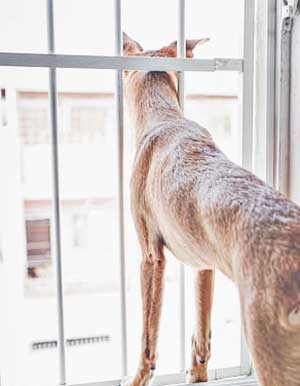Man’s best friend has been by our side for thousands of years, and there’s a reason why dogs have earned this title. From their loyal nature to their adorable puppy dog eyes, dogs have a lot in common with humans. In fact, many dog owners say that their furry friends seem to understand them better than anyone else! Dogs are great listeners, and they’re always happy to offer a comforting paw when we’re feeling down. But can dogs have autism?
They also have endless energy and enthusiasm for life, which is infectious and can help us to see the world in a whole new light. So next time you’re feeling low, just think of all the reasons why your dog is such a wonderful companion – you might be surprised by just how much they have in common with you!
So can dogs have autism?

While there is currently no scientific consensus on whether or not dogs can be diagnosed with autism, there is anecdotal evidence that some dogs show symptoms similar to those seen in autistic children. For example, some dogs may exhibit obsessive behaviors, such as excessive licking or spinning and scooting like the zoomies. With the exception of male or female dog humping, which may seem obsessive during mating season or when your female dog is in heat. This behavior should subside relatively quickly with a change of season.
Other dogs may have difficulty interacting with other dogs or humans, preferring to be alone.
And some dogs may be hypersensitive to sound or touch. While these behaviors could be indicative of a number of different conditions, they may also be signs that a dog is struggling to cope with the sensory overload of the world around them. As more research is conducted on the subject, we may learn more about whether or not dogs can truly be diagnosed with autism. In the meantime, however, it is clear that some dogs do exhibit behaviors that are similar to those seen in autistic children.
What are signs of autism in dogs?
Signs of autism in dogs may include decreased social interaction with other animals and humans, repetitive behaviors such as pacing or circling, reduced interest in activities that used to be enjoyable, increased sensitivity to environmental stimuli like sound or light, decreased communication with non-verbal cues such as eye contact and tail wagging, reduced responses to commands, obsessive-compulsive behaviors such as repetitive licking or chewing, and aggression.
If you suspect your dog may have autism, it is important to seek guidance from a veterinarian or certified animal behaviorist who can provide an accurate diagnosis and guidance on appropriate treatment. Early intervention can help dogs with autism lead more comfortable lives.
In addition to seeking professional help, there are several things owners of autistic dogs can do at home to improve their pet’s quality of life:
Establish consistent routines; introduce calming activities such as massage and playtime; create a safe environment free from loud noises or distractions; provide plenty of opportunities for physical exercise; offer frequent rewards for desired behaviors; and talk to your veterinarian about medications that may help reduce anxiety. Canine autism can be helped or treated using these suggestions.
Symptoms of canine dysfunctional behavior
Dogs are man’s best friend, but sometimes even our furry companions can exhibit signs of dysfunctional behavior. It’s important to be able to recognize the symptoms of these behaviors in order to get your dog the help he or she needs. Some common symptoms of canine dysfunctional behavior include excessive barking, chewing on furniture or other objects, and urinating inside the house. This is the equivalent of ASD in humans. ASD stands for autism spectrum disorder.
If you notice your dog exhibiting any of these behaviors, it’s important to consult with a veterinarian or animal behaviorist to determine the cause and create a treatment plan. With love and patience, you can help your furry friend overcome any challenges and enjoy a happy, healthy life.
Is My Dog Special Needs? Take this Quiz
Are you a dog owner worried about whether your pup is exhibiting abnormal behavior? This quick dog autism quiz can provide some valuable insight for you!
- Does your dog become nervous or scared when they’re exposed to loud noises. What about new people, or other animals?
- Does your dog exhibit destructive behavior when left alone? Things like chewing furniture or digging holes count.
- Is your pup exhibiting aggressive behavior such as growling, snapping, or lunging towards other dogs or people?
- Are you seeing strange and repetitive behavior from your dog,. For example, incessant licking or chasing its tail for extended periods? Maybe it’s standing still and staring at walls too often?
- Is your canine companion displaying recurrent behavior, such as spinning in circles or incessant barking?
- Does your pooch struggle to acclimate when transitioning into new environments or adapting to different routines?
- Is your dog fully house trained, yet still has accidents in the home?
If you have answered yes to more than three of the above questions, then your dog may be a candidate for canine behaviour disorder. Or your dog may have autism.

What should you do with an autistic dog?
When it comes to dog care, there is no one-size-fits-all answer. Each dog is unique, and what works for one may not work for another. However, this is especially true for dogs with autism. Because of their condition, autistic dogs often require special care and attention. Here are a few tips for caring for an autistic dog:
- Establish a routine. Dogs with autism often benefit from having a consistent daily routine. This helps to provide structure and stability in their lives.
- Avoid sensory overload. Dogs with autism can be easily overwhelmed by too much noise, movement, or activity. When possible, try to minimize stimuli and create a calm environment.
- Provide plenty of exercise. Exercise is important for all dogs, but it can be especially beneficial for dogs with autism. Exercise can help to reduce anxiety and improve overall behavior.
- Be patient and understanding. Dogs with autism often require patience and understanding. They may not always behave the way you want them to, but it’s important to remember that they are capable of love and affection just like any other dog.
How dogs behave like human people
Dogs have been called man’s best friend for centuries, and it’s easy to see why. Dogs and humans share a special bond that is unlike any other. From the way they express affection to the way they communicate, dogs have a lot in common with people. For example, both dogs and humans use body language to communicate.
When a dog wags his tail, he is usually trying to convey happiness or excitement. Similarly, when a person smiles, he is often conveying the same emotions. So it is no surprise that it might be possible for a dog to be autistic.
Dogs also use facial expressions to communicate their feelings. For instance, when a dog raises his eyebrows, he may be trying to show interest or confusion. In many ways, dogs behave like human people. They are social creatures who form strong bonds with those around them.
They communicate using body language and facial expressions. And they show a wide range of emotions, from happiness and excitement to sadness and fear. It’s no wonder that dogs have been such an important part of humanity for so long.
How dogs communicate
Dogs are highly social creatures, and they have developed a complex system of communication in order to interact with other members of their pack. Dogs use a variety of methods to communicate, including body language, vocalizations, and scent. Body language is perhaps the most important form of communication for dogs, as it conveys a great deal of information about their emotional state and intentions.
For example, a dog that is holding its tail high and its ears erect is usually alert and friendly, while a dog that has its tail between its legs and is averting its gaze is usually fearful or submissive. Dogs also use vocalizations to communicate, and the specific sounds they make can convey different meanings.
A bark can be used to express happiness or excitement, for instance, while a growl can be used to communicate aggression or warning.
Finally, dogs also communicate through scent. They have an extremely acute sense of smell, which allows them to pick up subtle cues from their environment. In addition, dogs produce a variety of unique smells from their glands, which they use to mark their territory or signal their availability for breeding.
All of these forms of communication allow dogs to interact effectively with each other and form strong social bonds.
To sum up
In conclusion, autistic dogs can make excellent pets. They are often very affectionate and loyal, and they can provide companionship and support for people with autism. However, it is important to remember that every dog is different, and some may require more patience and training than others. If you are considering adopting an autistic dog, be sure to do your research and work with a reputable rescue or breeder to find the right match for your family.